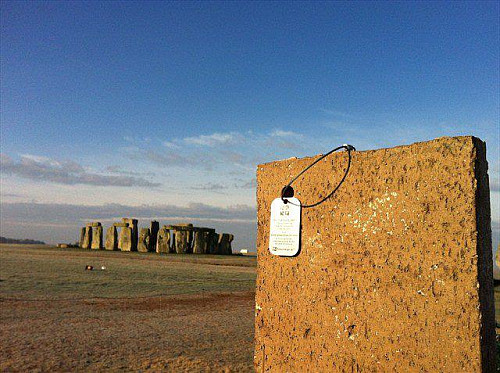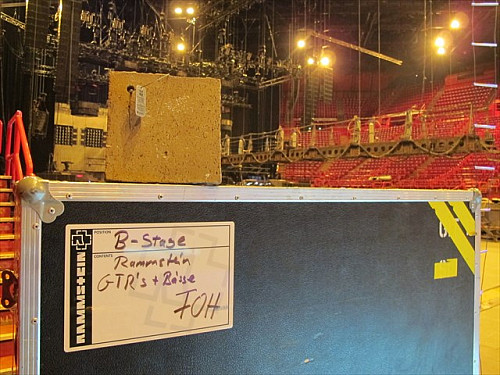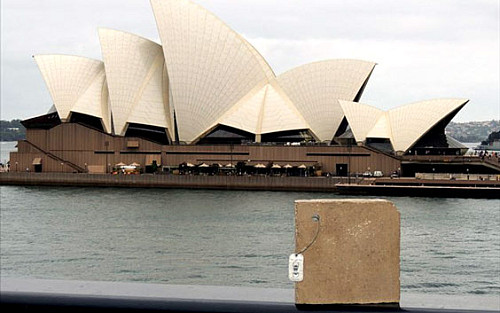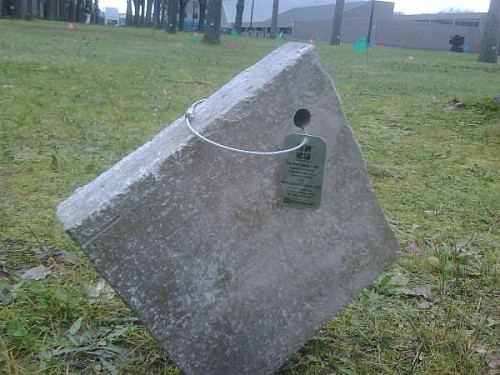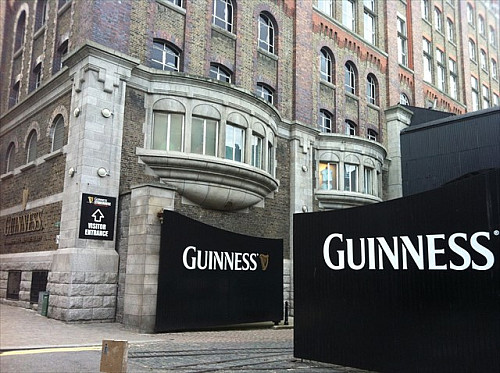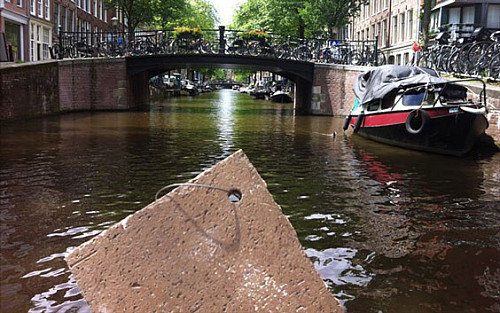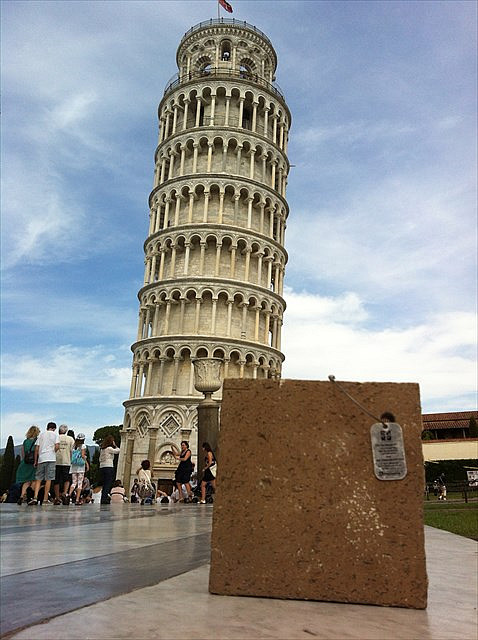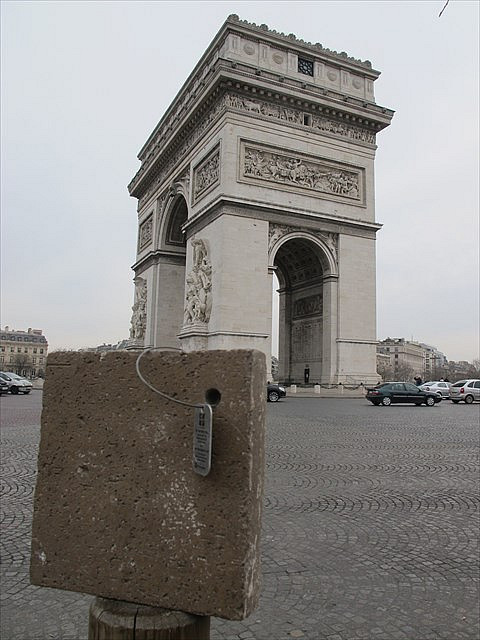The Flagstone Fugitive
When the main plaza was renovated back in 2009, a geocacher by the name of Dharma Dogs tagged a single flagstone paver bound for the dumpster, and instead sent the ubiquitous piece of Purchase architectural history—dubbed the Flagstone Fugitive—on what’s become a six-year journey around the world.
For the uninitiated, geocaching is a “real-world, outdoor treasure hunting game using GPS-enabled devices.” Participants hide containers at a specific set of GPS coordinates while others attempt to find them. Read more about the history and details of geocaching here.
The Flagstone Fugitive has its own Facebook page and according to its geocaching.com information page I’m Gonna Brick Away, the Purchase Brick wanted to travel following its retirement from serving underfoot since 1971 on the plaza designed by Edward Larrabee Barnes.
From parking lot W1, the brick traveled the US with visits to Illinois, Texas, Washington, and California. It was photographed at UCLA’s Hammer Museum in February 2011—another building designed by Barnes.
An intrepid geocacher named Pitt Monqui brought it to Europe in February 2012, which began its European tour including visits to Stonehenge, Salisbury Cathedral, the Eiffel Tower, the Leaning Tower of Pisa, as well as sites in Germany and Belgium.
The brick even made an appearance in geocaching.com’s video Geocaching.com Presents: 20 Unforgettable Geocache Destinations (in 40 seconds).
It stayed underneath a cannon in Barcelona for some time, then visited Denmark and Sweden. Geocacher Rankku brought it to Australia in November 2013 where it remains today.
Sadly, it went missing for a time there, but according to the log, it was back on track and waiting for its next adventure in New South Wales, Australia in the Cache Me If You Can cache.
Pitt Monqui then rescued The Flagstone Fugitive and was prepared to bring it on tour with the Foo Fighters, but it remained in a shipping container in London.
It finally returned home last summer after traveling enough miles to circle the earth 2.8 times.
Follow its travel developments here.
